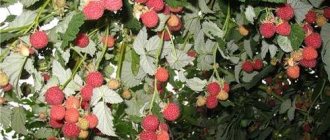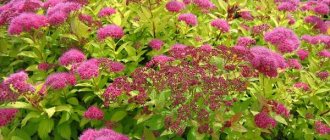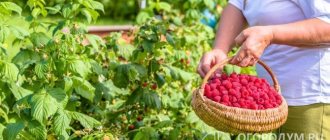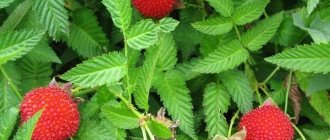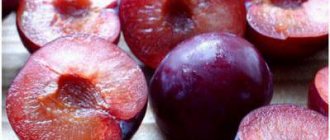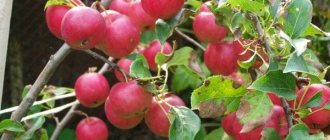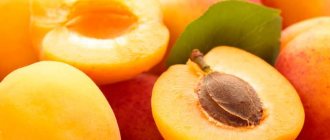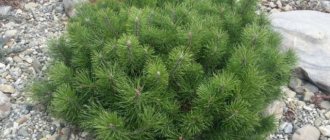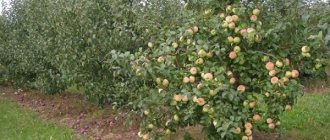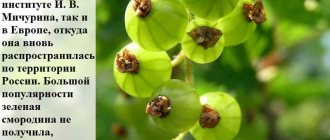Pink currant is a berry bush. And its tasty, aromatic, healthy fruits have long proven themselves on the positive side. The acquired popularity remains relevant today. The origin of garden currants as a crop goes back far. In the 19th century, when she, a representative of the forest fauna, was dug up and assigned to farmsteads.
The first breeding work on cultivation was carried out by monks. Experimentally achieving an increase in varietal characteristics. A fairly large amount of vitamins, nutrients, and organic acids encouraged the development of various species and varieties. Not very sour taste attracts. The fruits are suitable for fresh consumption. And also for making compotes, jams, and preservation. And a few more dishes, in principle, like the berries of other varieties of currants.
Pink currant: description of varieties
Pink currant is a fruit crop. Does not have a large number of varieties present in other varieties of currants. A distinctive feature is a pronounced, pleasant, sweetish taste. And the fruits are many times larger. The playful color of the berries ranges from pink to bright raspberry shades. There is little varietal diversity. Below we will look at the features of the most popular varieties.
Pink nutmeg
According to the descriptions, it is the best among varieties. The bush grows compact and low. The crown is formed in the form of a ball. Beautiful flowers complement the overall picture. The peculiarity of this representative is its subtle, delicate, nutmeg aroma. The sweet taste of juicy, large fruits combined with the aroma make up the ideal idea of Pink Muscat as a variety. The increased content of vitamins allows you to consume fresh berries. But compotes, jams, jelly, and fruit drinks will not become spoiled when using the fruits.
In addition to the variety of vitamins, Pink Muscat, like any other currant variety, is rich in microelements. Refers to crops whose fruit ripening periods are earlier. In mid-June, such crops are already harvested. Pink nutmeg grows well in places where partial shade is formed. But sunny areas are also suitable for the bush to feel comfortable. For good development of the bush and obtaining a healthy and abundant harvest, the soil must be fertile.
Main criteria for selection
When choosing a crop such as red currant for the Moscow region, first of all, attention is paid to the ripening time. If the variety is late-ripening, then in the northern regions you may not get a harvest at all
Therefore, taking into account the climate, choose the type:
- Early varieties produce harvest from mid-June to mid-July;
- The berries of mid-season varieties begin to ripen in the 2-3rd decade of July, but currants are larger and sweeter;
- Late varieties ripen only in August. The berries of these varieties are the sweetest.
When choosing red currants for their farm, most gardeners focus on yield indicators. And this is fair, because everyone wants to get the maximum amount of tasty and healthy berries so that they have enough to eat in the summer and stock up on for the winter.
On a note. The most productive varieties include the Dutch Red, Rondom, Marmaladnitsa, Yuterborgskaya, and Sugar varieties.
Pink currant Wonderful
Refers to early ripening varieties. Precocious appearance. At the end of June, as a rule, 100% ripening of all fruits occurs. Bright, pink fruit color. The taste is excellent: sweet, juicy, large berries. Very high sugar content. It is this fact that gives it great sweetness. The piquancy comes from a slight sourness.
The variety occupies one of the first places in terms of the content of useful substances:
- vitamins: A, C, E;
- acids: ascorbic, succinic;
- trace elements in large quantities: copper, iodine, iron, magnesium;
- pectins.
Fruiting is annual, abundant, regular. A distinctive feature of the variety: increased resistance to diseases and pests. It also survives wintering well. Of course, all these qualities can be lost without following the rules of agricultural technology. For successful growth and fruiting, it prefers places in summer cottages that have sufficient sunlight and are well ventilated.
Pink currant Rossoshanskaya
Experienced gardeners consider this variety to be promising. Considered one of the best species. Juicy, large, sweet fruits. Excellent taste is considered another distinctive feature. Pronounced pink color of the berries. Transparent skin. Self-fertile variety. That is, there is no need for artificial pollination. Or attracting pollinating insects. The average ripening time is usually the second half of July. The bush is quite tall. Abundant formation of branches and green cover. Differs in pronounced immunity. The variety is not afraid of winter frosts. It is also resistant to diseases and pests.
The best varieties of red currants for the Moscow region
Red currants suffer less from frost than their black varieties. Its shoots are more durable and quickly begin to bear fruit. The berries do not fall off for a long time, until the leaves fall. The best representatives of this group are characterized by productivity and resistance to external conditions.
Lapland
Lapland is the best sweet variety of red currant for the Moscow region. The shrub is low-growing, slightly spreading. Its shoots are thin and straight. Its berries are of medium size, reaching a weight of 0.7 g. Their shape is spherical, light red in color, and the skin is thin. The taste is delicate, sweet and sour. Tasting indicators are high - 4.9 points.
The Lapland variety is considered one of the best in terms of self-fertility. After ripening, the harvest from the bush does not fall off for a long time. Up to 3.2 kg of fruits are harvested per season. The plant is little susceptible to diseases and pests. Its winter hardiness is high, the branches do not freeze after severe cold.
Beloved
Beloved is the best Belarusian variety, which is approved for cultivation in the Moscow region. The plant is a medium-sized, slightly spreading bush, the branches of which are straight, thick, with an anthocyanin tint. The berries of the bush are one-dimensional, spherical, bright red in color.
The Beloved variety is characterized as self-fertile and does not require pollinators. Its productivity is stable. The plant is not susceptible to powdery mildew. Occasionally, its leaves are affected by spotting. The taste of the berry is sweet and sour, very refreshing in the heat, rated by tasters as one of the best: 4.9 points out of 5.
Natalie
The Natalie variety is of medium ripening, one of the best in terms of resistance to frost and disease. The shrub is slightly spreading, medium-sized, very dense. Its shoots are gray-brown and grow straight. The berries weigh up to 1 g, are spherical in shape, have a rich red color, and their tear-off is dry.
Natalie's currant is self-fertile. Its productivity is increased, it is one of the best fertile crops, producing up to 4 kg of berries. The main disadvantage of this variety of currant is the rapid growth of the crown, which needs to be tied up.
Important! Self-fertile species do not require a pollinator to form a crop.
Early sweet
Another sweet variety of red currant for the Moscow region. One of the best in terms of fruit size, yield and winter hardiness, it forms a small shrub with medium density. Its fruits are large, with an average weight of 1 g.
The Early Sweet variety is harvested fresh or for homemade preparations. The pulp contains small seeds. The taste of the berries is sweet and sour, very refreshing. This is one of the best among currant types with increased resistance to diseases and pests.
Ilyinka
Red currant Ilyinka is one of the best large-fruited varieties, which is chosen for planting in the Moscow region. It is a dense bush of medium size. Its branches are straight and thick, light brown in color. The berries weigh from 0.8 to 1.6 g, are spherical in shape, and have a pleasant taste. Expert assessment of taste is 5 points.
Ilyinka is considered one of the best in terms of yield, reaching up to 5 kg. The self-fertility of the crop is high; the plant bears fruit without pollinators. He also has a high immunity to fungal infections.
Sugar
Sugar currant is one of the best sweet varieties for the Moscow region. It ripens early, in July. The shrub is partially self-fertile, resistant to winter cold, diseases and pests. The fruits have a sweet and sour taste, round shape and bright red color. The crop is of universal use.
Alpha
Alpha is also one of the best varieties of large red currants for the Moscow region and the middle zone. The bush is spreading, but not very tall, with branches of medium thickness. The berries, weighing from 1 to 1.5 g, are one-dimensional, spherical, the taste of which is rated 4.7 points.
The Alpha variety is also the best in terms of yield: it is capable of producing up to 4 kg of berries. Its self-fertility is high; the plant does not require additional pollinators. In the middle zone it does not suffer from powdery mildew.
Variety Prygazhunya
A hybrid developed by crossing white and red currant varieties. Bred in Belarus. Medium-sized bush, straight runs. The green crown is not very spread out. The fruits are light pink. The high content of ascorbic acid gives the berries a pronounced sweet and sour taste. Increased productivity. And also excellent immunity to diseases. For example, to powdery mildew. Resistant to frost. The downside can be considered a slight vulnerability to “leaf spot” as a type of disease.
Lyubava pink
The variety was obtained by crossing white and red currant varieties. Open pollination was used. It's a hybrid because it was bred experimentally. Very high productivity. Average ripening time. The berries are pale pink. Ascorbic acid is contained in increased quantities. Which gives the fruits an enhanced, sweet and sour taste. The bush is small in size, the branching of the crown is insignificant. It tolerates prolonged hot weather in summer and severe winter frosts.
Fruiting is regular. Abundant, simultaneous ripening of fruits, which makes harvesting easier. The berries can remain on the bush for a long time without falling off, even when fully ripe. Young shoots bear fruit. And also adult branches. Berry clusters with a large number of berries are formed, up to 16 pieces on one.
Important ! Berries are absolutely not capable of causing various types of allergies. Therefore, they are suitable as treats for children and people suffering from specific diseases.
Appearance, characteristics of berries, ripening time, yield
The variety is early ripening (ripening period - July). The plant form is deciduous shrub. The bush is medium-sized (0.9–1.2 m), spreading (crown diameter - 1 m), densely leafy. Young shoots are straight, vertical, pinkish along the entire length, slightly pubescent, annual growth is 60 cm. Old branches are lignified, straight, light brown.
Read about the Dutch pink currant variety.
The berries are dense, one-dimensional, pink, translucent. Fruit weight is 0.9–1 g, size is about 8–10 mm in diameter. They ripen in July 70 days after pollination. The separation is dry. The peduncle is medium, light green, thin. The berries are located in drooping clusters and do not fall off when ripe. Under favorable conditions, during the growing season and with fewer fruits in the bush, the berries are larger, since competition for nutrients is eliminated.
The skin is thin, transparent, the flesh is juicy and aromatic. The taste is sweet, dessert. Universal use. Berries are highly valued as a decoration for desserts. The variety is fast-growing, with simultaneous ripening of berries. It begins to bear fruit in 1-2 years, reaching maximum yield by 3-4 years.
Productivity - 4–6 kg of berries from each bush. Under the weight of the berries, the branches may lie down and the shape of the bush may disintegrate; in such cases, supports and tying of the stems are necessary.
Currant Pink pearl is a self-pollinating variety, that is, a pollinator is not required and one type is sufficient for the formation of ovaries, but the presence of a second variety nearby and the flight of bees and insects can improve the quality of pollination and increase productivity. The plant is a good honey plant.
The variety is characterized by high resistance to low temperatures (zone 4), diseases and pests. Flowers and ovaries may be damaged by spring frosts.
Assuming that pink currants are closer to red ones, we can assume that the composition of biologically active substances (per 100 g of fresh berries) in these varieties is approximately the same:
- calories - 56 kcal;
- proteins - 1.5 g;
- fats - 0.2 g;
- carbohydrates - 14 g;
- mono- and disaccharides - 8.3 g;
- water - 85 g;
- ash - 0.6 g;
- dietary fiber - 4.8 g.
Berries are a good source of various phytonutrients, vitamins and minerals. Pink currants are rich in vitamins A, B, C (49% of the daily value) and potassium K (10%). It contains more vitamin C and antioxidants than oranges. Potassium is a mineral that is essential for all cells in the body, especially muscle tissue and the heart. Being a good source of fiber, pink currants improve digestion.
Read all about the health benefits and harms of white currants.
Pink pearl
Variety of Canadian origin. The fruits are very sweet and large in size. There are no acids at all. Can be grown in any climate. From temperate regions to southern regions. A completely unpretentious shrub in terms of growing methods and conditions. The bush is of medium size, the crown is widely spread. The presence of such shelter allows the fruits to have complete protection from sunburn.
The presence of a powerful root system and an increased number of lateral shoots allows the plant to provide itself with sufficient moisture. And also essential nutrients. Increased fruiting. Differs from simple currant varieties. Good resistance to fungal diseases. A pest attack can be harmful. But dealing with them is quite easy. Just use a light pesticide treatment. Accordingly, strictly according to the instructions.
Pink currant variety Rosa-Chair (fine)
Representative of dessert varieties of currants. Ripening time is average, approximately mid-July. The low bush forms a crown that is not very spreading. Which gives the impression of compactness. Looks neat. The picture is complemented by beautiful abundant flowering. The color of the berries is uniform, pink, very rich. Soil quality is not the most important requirement of this shrub. But on the recommendation of experienced gardeners, we can say - still choose loamy, not weighted soil. This choice will allow you to get a decent harvest regularly every season.
It is better to choose a sunny area for planting currants. A little shade won't hurt. Be sure to be well ventilated to avoid the occurrence of various fungal diseases. If your choice is in an area with poor lighting, this fact will lead to a decrease in sugar in the fruit. The taste will change. It will also add acid.
Dutch Pinkcurrant
Late ripening variety. Very popular in its variety. It has a decent height. An adult bush can grow up to one and a half meters. The crown is quite extensive and spread out. But there is no strong density. Large fruit size. The color is light pink. Follow all the rules for caring for this variety and you can harvest berries approximately the size of a cherry. Dutch-dessert variety. Hence, there is a pronounced sourness in the taste.
Quite high yield. It is easy to achieve this amount of yield, up to 9 kilograms per bush. The variety is not picky in care. Tolerates low climatic temperatures well. And also the resulting frosts. And prolonged drought cannot cause significant harm to fruiting. The main thing is proper care. Although not very difficult. Immunity to pests and diseases is very good. But don't neglect prevention.
Important ! The berries do not last long. Because they are simply not designed for this. Therefore, it is advisable to consume them fresh.
Characteristics of the variety
Black currant variety Sokrovische is an early-flowering, early-ripening, winter-hardy and high-yielding variety. The main feature of the variety is the short period of bush life and fruiting, amounting to seven years.
Important! To achieve a good yield of the Sokrovische variety, it is recommended to replace old currant bushes with new ones every five years
Drought resistance, frost resistance
This variety of black currant is relatively drought-resistant and does not tolerate long-term lack of watering during the summer heat, when the weather is hot and dry.
The Sokrovische variety tolerates frosts well, down to -25 °C, but is suitable not only for the climatic conditions of Siberia. Currants are successfully grown in all regions of Russia.
Productivity of the variety
Black currants bloom in early May, and closer to the second half of June you can get the first fruits. The yield of the variety is very high and averages up to 4 - 5 kg of berries from one adult bush. The fruits ripen almost simultaneously, which is very convenient because it does not delay the harvesting process.
Ripe currant berries of the Sokrovische variety are well preserved on the branches and can remain on them in a ripe form, without losing their qualities, for up to 10 - 14 days. At the same time, they do not crumble or dry out in the sun, and their size does not decrease as they ripen. However, picked fruits can be stored fresh for no more than two days: after that they disappear. Since the berries have thin skin and do not keep well, they do not tolerate transportation over long distances.
The fruits of black currant Treasure can be consumed both raw and in the form of jam or jam. Frozen berries do not lose their nutritional properties and serve as an excellent filling for sweet pastries.
Resistance to diseases and pests
The Sokrovische variety is highly resistant to various diseases and garden pests due to its high immune resistance. With proper care, timely feeding, watering and pruning of diseased branches, the plant does not need additional attention.
Pros and cons of the variety
The main advantages of Treasure currants include:
- high productivity;
- frost resistance;
- one-dimensionality and taste of berries;
- high immunity;
- self-pollination;
- precociousness.
Disadvantages of the variety:
- short shelf life of berries;
- poor transportability;
- earlier aging of the bush.
In addition, do not forget that the variety does not tolerate prolonged drought, so it is important to organize regular watering in arid regions
Planting, process features
All varieties, colored varieties of ordinary garden currants (white, red, golden, pink) are very unpretentious berry bushes. However, each has its own agrotechnical rules for planting and care. Nobody canceled them. And you should strictly follow all the rules. This is a necessity and should be accepted as a fact. Failure to comply leads to disappointment. You will not get the expected harvest. Moreover, even an unpretentious plant that is resistant to most external influences can simply get sick. And also, in the worst case scenario, develop poorly and die.
In the case of Pink currants, let’s highlight some rules:
- The best time for planting is autumn. Namely, the beginning of the autumn period. For example, in September. If you were unable to plant the crop before October, postpone it until next season. Because the plant simply does not have time to adapt to new conditions. And your efforts will be a waste of time. Many years of experience of gardeners does not recommend planting in the spring;
- We choose sandy or light soil. And also loamy composition. Neutral in acidity. Low places immediately disappear. Currants do not accept dampness. It develops poorly under such conditions. Later he simply dies. The selected area should be well-lit and open. And also not shaded by various tall crops or buildings;
- The self-fertility of currants contributes to a large harvest. You can enhance the effect of pollination using other varieties. This additional pollination improves the regularity and quality of the harvest.
Diseases and how to deal with them
Modern varieties and hybrid forms of white are resistant to infection by diseases and pests. More often, problems arise when planting is too dense, care rules are not followed, and water stagnates in the soil. As a preventive measure, routine treatment of shrubs and soil with a systemic fungicide should be carried out. Opening hours: early spring and autumn. For the treatment of fungal infections, copper-containing preparations, for example, Bordeaux mixture, Hom and Oxychom, demonstrate effectiveness. In addition, old and deformed shoots and vegetative parts with signs of infection should be systematically pruned.
Whitefly
A harmful butterfly whose body length does not exceed 3 mm. It got its name because of the white color of its wings. Often found in regions with warm and humid climates. Both adult insects and their larvae pose a danger to the currant bush. They infect leaves, shoots and roots, and feed on plant sap. This leads to a deterioration in metabolism and a slowdown in photosynthesis. It may happen that the bush stops growing and bearing fruit and gradually fades.
We recommend that you familiarize yourself with the best varieties of currants for Siberia in this material.
To combat whiteflies, chemical insecticides with contact and systemic action are used. For treatment, you can use Aktara, Iskra, Actellik, Intavir. Spraying of soil and bushes is carried out twice, the interval between procedures is 10 days.
Gray rot
The causative agent of the disease is a pathogenic fungus found on plant debris. The plant may look sick. Able to endure cold winters, has endurance to external factors. The infection can be determined by the withering of the shoots of the first year of growth. A gray coating appears on the leaves, gradually growing throughout the entire blade. For prevention, you need to prune and clean up leaves after picking berries. For treatment, traditional methods are used (soap solution, soda ash), chemicals (copper sulfate, Bordeaux mixture, Khom). Spraying should be carried out in two stages with an interval of 10-14 days.
Why does the bush turn white?
The appearance of a white coating on the leaves and shoots of currants can be a sign of various types of problems. More often it indicates that the plant is infected with powdery mildew. This is a fungal infection that affects all vegetative parts and leads to the death of the bush within 1-2 years. It responds well to treatment; to combat the disease, treatment with fungicides with a high copper content is used.
The second common reason why a plant may turn white is a lack of magnesium in the soil on the site. As a rule, it is observed when growing crops on a clay or peat substrate. What to do about it? The problem can be eliminated by applying mineral fertilizer, for example, potassium magnesia at the rate of 10 g per square meter. meter.
Reasons why it may crumble
Shedding of flowers is a common cause of reduced yield of white currants, which must be combated. The problem may be caused by one or more unfavorable factors. The following provoking conditions are identified that may cause white currants to fall off:
- excess or lack of potassium in the soil;
- growing a plant on an excessively wet substrate, stagnation of water in the soil;
- damage by fungal or viral diseases;
- infestation with pests (bud and spider mites, thrips);
- non-compliance with the rules of care, watering and fertilizing regimes;
- growing old bushes over 15 years old.
Insecticides are used only when traces of harmful insects are detected. It is advisable to apply mineral fertilizer, for example, nitroammophoska at the rate of 20 g per square meter. meter.
Why is there no ovary
The absence of fruiting is normally observed in the first 2-3 years of plant growth. Then the sign indicates the presence of diseases or problems with care or soil composition. Reasons why ovaries do not appear on currants:
- lack of potassium in the soil;
- infection of the bush by diseases and pests;
- prolonged drying out or waterlogging of the soil;
- low-quality planting material, plant age over 15 years;
- there are no pollinators in the immediate vicinity (not self-fertile currants).
You can find a list of the best blackcurrant varieties for the Urals here.
Ovaries form on the plant a few days after the final formation of flowers. If the berries do not develop, you will not be able to get a harvest this season. Experienced gardeners recommend that in such a situation, complete pruning of the bush or replanting it to a new location.
Agricultural technology for proper planting
An important factor is the choice of planting material and seedlings. The propagation method is more preferable than cutting propagation. Cuttings, as a rule, take root much more difficult. Seedlings are selected one or two years old.
Evaluating characteristics for planting material will be:
- The root system must be well developed and strong for the seedling. And also healthy in appearance;
- the roots should not be dry. When trying to bend, they easily succumb to this action;
- no mechanical damage upon careful inspection;
- there is no hint of the presence of any disease or mild rot. And also mold formations.
If any violation of the above is detected, such seedlings are immediately rejected. Because the hope for their salvation is 20%. This means you can simply waste precious time without getting any results. High-quality seedlings should have no more than three main roots. There are multiple side shoots. The root is very elastic. When you try to bend it too much, it bends. Then it takes the opposite form. No cracks or breaks are formed. Since the seedling is pruned, its height does not matter. If upon inspection you are convinced that the plant is healthy, but its root system is dry, simply keep the roots in water for at least 3 days.
Rules for planting pink currants
As a rule, gardeners plant more than single bushes of different ripening periods on their plots. This system helps to harvest crops at different times. And also have delicious healthy berries on the table throughout the summer. When planting, it is necessary to follow the rules of agricultural technology for each variety. In some ways they are similar, but there are also differences.
The first is the distance between plants. If the bush is compact, then a distance of a meter will be sufficient. If the bushes are powerful, branched, at least one and a half meters. In the case of red currants, if the plantings are formed in rows, the row spacing is at least 2.5 meters. Still, there are varietal characteristics. Therefore, when choosing a distance, be guided by the situation. Depending on the variety chosen.
Loose, loamy soil will be an excellent place to plant pink currants. Heavily acidified areas? It is necessary to add chalk solution or lime. The hole for placing the seedling is deep enough. As a rule, up to 50 centimeters. Width approximately 0.5 - 0.7 meters. The soil needs to be nourished. Look at the situation. Mix superphosphate or potassium sulfate with soil dug from the planting hole. Add humus and mix thoroughly.
The preparation of the pits is carried out four weeks before planting the seedlings. The planting method is inclined. This contributes to the formation of multiple branches in the plant. The seedling was placed and covered with prepared soil. And also be sure to seal well. Water with at least 0.5 buckets of water per bush. Mulch the soil around the plant with humus. In dry summer weather, repeat watering no earlier than three days.
Description of colored currants
The homeland of currants is Europe and Siberia, which is why it feels so at home in our gardens. Wild currants can be found in the mountains, in forest clearings, and in bushes. The fruits contain vitamins C, A, B1, B2, PP, K, E, microelements, acids, pectins.
Cauliflower currant is a small deciduous shrub of the Gooseberry family. The red and white species have the same developmental biology, but slightly different from the black biology. White is a variety of red and differs from it only in the color and taste of the fruit.
The distribution area is in the forest zone throughout Eurasia, where it grows wild. It is found on forest edges, prefers the banks of rivers or streams, and forms thickets.
The root system penetrates the ground as deeply as that of the black species. Every year shoots grow from the base, the strongest of which are left to form a bush, the weak ones are removed.
The leaves are alternate, five-, three-lobed or entire. Fruit buds are numerous. On one-year-old wood they are located singly, and on two-year-old and perennial wood - in groups. The fruit bud, located in the leaf axil of an annual shoot, blooms in the spring and produces a flower cluster, and from it a fruiting ringlet subsequently develops, which lives somewhat longer than in black varieties. Both red and white enter the growing season before black. The fruit is a multi-seeded berry. It has a whitish or yellowish color, sometimes colored. The shape of the berry is round, oval and pear-shaped.
Berries contain sugar, acids, aromatic substances and vitamins. There is noticeably less of the latter than in black fruit, especially vitamin C. The fruits are used for fresh consumption, as well as for making jam, juices, marmalade, jelly, etc.
Perennial shrubs are more durable than black currants. They can live 25-30 years. The harvest under favorable conditions can reach 20 kg, sometimes 25-30 kg, and the bushes can bear fruit for a maximum of 20 years. Horizontal roots are located in a layer of 30-40 cm, and vertical ones penetrate to a depth of 1.2 m. The first harvest can be collected from three to four year old bushes, and then the yield increases every year. In the 9-12th year after planting, currants reach their peak yield, and by the age of 15 they “get tired” and the yield noticeably decreases.
The color of the berries ranges from pure white, through pink to dark red, and its most important difference from black currants is the absence of a specific smell in the leaves and berries, but the main thing is that the berries, even when ripe, do not fall off for a long time and can decorate the garden until frost.
It can be planted along the boundaries of the site along a low fence, retreating from it by 1-1.5 m, or along paths. This will be especially convenient if you later form the bushes in the form of a flat trellis. The distance between bushes depends on their size in adulthood. Plants with compact, upright crowns can be planted every 1.25 m, and large, spreading bushes - after 1.5. Otherwise the placement is similar to blackcurrant.
Pink currant. How to water?
Watering is the main stage of caring for currants. Must be timely and sufficient. But you shouldn’t water to reserve. Stagnant water has a detrimental effect on the crop. Autumn, proper care will allow you to have an excellent harvest next season. Do not forget about loosening and weeding from malicious weeds. Because they can cause various diseases. They will also be an excellent shelter for pests during the winter.
Pink currants love moisture. Development will be gradual, the plant will be healthy. And, accordingly, the long-awaited harvest will please you with its quantity. Good moisture is the key to proper plant development. But you shouldn’t do it very often. As a rule, 5 waterings are enough during the summer season. It is taken into account that summer is not without rain.
If the summer is very hot, watering needs to be done more often. As a rule, once a week. 40 liters for each bush. Another type of irrigation is sprinkling. The process is very important for currants. In cases where rain is a rare occurrence during the season, carry out regular artificial sprinkling. After the last harvest is harvested, the foliage begins to fall en masse. Water each bush deeply for the last time for the season.
How to propagate currant bushes by layering (with video)
Red and white currants reproduce well by horizontal layering. At the same time, from one shoot in 1 - 2 years you can get 3-5 or more high-quality seedlings.
To obtain seedlings using this method, annual shoots and well-developed one- and two-year-old branches are bent down from the bush in early spring (before buds open). They are placed in grooves 5-6 cm deep and pinned tightly to the ground with wooden or metal hooks. Before laying shoots (branches), the soil is fertilized and loosened. To enhance the growth of shoots from the lateral buds, the tip of the shoot is shortened by 7-10 cm before laying.
When planting currant bushes with layering, the grooves should not be filled with earth; they are left open until vertically growing shoots appear. From time to time the grooves are moistened. When the young shoots reach a length of about 10 cm, they are covered halfway with loose soil and humus. To propagate currants by layering correctly, as experienced gardeners advise, after 2-3 weeks, when the shoots grow again, hilling is repeated to a height of 8-10 cm. Hilling is carried out with moist soil, so it is done after rain or the soil is pre-watered.
During the summer, when planting and tending in open ground, the soil around the mother bushes and layerings is kept loose and moist, free of weeds. To retain moisture after watering, mulch the soil. In mid-September, when shoot growth ends, bent shoots for layering are cut off from the bush at the base of the branch with pruning shears. The dug out branch is cut into pieces according to the number of rooted cuttings, then they are sorted. Well-developed plants are selected for planting in a permanent place. In poorly developed ones, the roots and shoots are shortened, then they are planted in a shrub in the second year for growing with a distance between plants of 20-25 cm, inclined to the surface and somewhat deeper than they grew.
Watch the video on how to propagate currants by horizontal layering:
Below we describe how to care for currants in spring and autumn.
Top dressing
Colored currant varieties respond well to mineral fertilizers. During the entire growing season, currants must be fed at least 4 times. The first feeding is carried out in the spring by applying nitroammophoska in dry form, apply directly under the bush. The second feeding is carried out during the flowering period: superphosphate 10 grams + potassium sulfate 8 grams + a bucket of water. Pour out the entire mixture. In the amount of 200 grams per bush. The composition of the second fertilizing can be repeated after the last harvest.
Growing
Currants are an unpretentious crop that requires minimal care for the formation of berries. The yield and health of the bush directly depend on compliance with the timing and agricultural practices of planting. The timing and algorithm of work may vary depending on the quality of the soil and climatic conditions in the region.
Landing
Currants in the garden are planted with grown seedlings over 2 years old. Their bark normally has a uniform light brown color; there should be no traces of mold, rotting or other signs of fungal infections. Planting is carried out in individual holes with a depth of 20 cm. It is recommended to lay a layer of drainage at the bottom, as well as 200-250 g of wood ash. The seedling is placed strictly in the center of the hole, after which it is covered with a layer of fertile soil. Immediately after work, you should generously water the area around the tree trunk and mulch it with sawdust, peat or humus.
Features of growing Prune gooseberries are described in this article.
Time and place of landing
Pink currant seedlings are recommended to be planted in the soil in the spring after the end of return frosts. The soil and air should warm up to stable values of 10-14 o C. In warm regions, planting can be carried out from the second ten days of April. In the north it is advisable to wait until the beginning of May. Among gardeners, autumn planting of seedlings is also practiced; with this method, you can speed up the first growing season, but there is a risk of hypothermia of the young plant.
For growing, it is recommended to choose bright areas with good lighting; protection from the wind is not required. The culture prefers fertile and drained soil with a neutral or slightly acidic reaction. You should not plant currants in lowlands or near a body of water, or in areas with groundwater surfaces.
The shrub needs minimal but regular care. To maintain the health and productivity of the plant, moderate watering, loosening and mulching of the soil should be carried out. As well as mandatory procedures for all types of currants - fertilizing and pruning. In regions with humid and warm weather, it is recommended to spray the plantings with fungicides to prevent infection.
Top dressing
Fertilizers for pink currants are applied 3-4 times per season, depending on the condition of the soil. Feeding scheme:
- In early spring, before the start of active growing season, add organic matter, for example, an aqueous solution of mullein in a concentration of 1:10. 5-6 liters of product are required per 1 m2.
- At the beginning of budding and during the fruiting period, the plant needs phosphorus and potassium. They can be applied as part of a complex fertilizer or separately. Recommended dosage is 10 g of superphosphate, 8-12 g of potassium sulfate per 1 m2.
- At the end of the season, currants are fed with both mineral and organic compounds. Mullein or complex mineral fertilizer is suitable for this.
We recommend that you familiarize yourself with the features of growing Kolobok gooseberries in this material.
The deficiency of macro- and microelements in the soil can be determined by the condition of the leaves and shoots. They begin to turn yellow and curl, and the plant itself stops developing and bearing fruit.
During the fruiting period, it is not recommended to add organic matter for feeding. This leads to the formation of small berries and increased growth of green mass.
Trimming
Throughout the summer, sanitary and formative pruning of the bush is carried out. In early spring, as well as after harvesting, all old, deformed and weakened parts of the bush should be trimmed. It is advisable to leave no more than 10-15 branches over 2 years old. In summer, only shaping is required in order to preserve the decorative appearance, as well as pinching the buds in the first 2 years of growth. All procedures should be performed with a sharp instrument, and the cut areas should be treated with garden pitch or wood ash.
Disease Prevention
Pink currants can be affected by fungal, bacterial and viral diseases. To prevent infection, it is recommended to treat the planting in spring and autumn. Chemical fungicides with complex action (Fundazol, Topaz, Maxim, Trichodermin and others) demonstrate the greatest effectiveness. To combat fungus, use only copper-containing products, for example, Bordeaux mixture. If signs of disease are detected during the fruiting period, treatment with traditional methods is possible, which does not affect the quality and taste of the crop.
Pink currant: pros and cons
Pink currants rank first in terms of the composition of nutrients. The number of such substances is unique in quantity. Contains: microelements, fiber. As well as acids of organic composition. Despite some features, caring for currants will not be difficult. The bush is self-fertile. If you choose the right varieties, you can get a harvest all season long. The downside is that some varieties are prone to fungal diseases.
Some tips for a novice gardener
When choosing seedlings, be guided by the climatic conditions of the region where you live. If the choice is correct, there will be no unjustified efforts when growing the crop. The soil must be slightly acidic or close to neutral. The problem with acidification is easy to solve - just add lime when digging the area. We select neighbors for currants in accordance with the compatibility table for different garden crops. Regular, timely watering. Necessary, recommended fertilizing, especially in spring.
Planting and care
For Dutch red currants, similar to other varieties of red currants, choose a sunny place, protected from cold, gusty winds and drafts. It is planted in the fall, in the first half, so that the young plants have time to take root and get stronger by winter. The crop bears fruit abundantly on fertile soils, so organic and mineral fertilizers should be added to the depleted soil. This crop should not be planted in lowlands or flooded areas to prevent root rotting. Before planting, humus or rotted manure and phosphorus-potassium granular fertilizers are applied to the site selected for it at the rate of 80 g per 10 square meters. m. The application of fertilizers is timed to coincide with the digging of the site, since they should be located deep enough. Plants are planted in planting holes, the size of which corresponds to the root system of the seedlings. When planting in rows, the distance between the bushes is about 1.5 m, and between the rows - 2.5 m, that is, 4 bushes can be planted on a 10-meter area.
The seedlings are planted at a slight slope, which will allow the bush to spread out and form a large number of shoots. When planting, it is necessary to ensure that the root collar is not more than 6–7 cm below ground level. The seedlings are buried, the soil is compacted and watered abundantly. After planting, all shoots are cut to a length of approximately 15 cm, leaving several developed buds on each. Mulching the tree trunk circle with peat or humus does not allow moisture to evaporate rapidly from the surface of the earth. When choosing seedlings you need to pay attention:
- for the presence of a developed root system with flexible roots;
- possible mechanical damage;
- absence of rotten places and mold.
Important! In the shade and on poor soils, Dutch currant berries become smaller and lose their sweetness. Lack of nutrients forces the plant to shed some of its ovaries.
Aftercare
From the description of the variety of red and pink Dutch currants, it becomes clear that they are very moisture-loving, and in order to grow a crop like the one shown in the photo, it is necessary to follow a watering schedule. It should not be frequent, but plentiful. It is enough to water the plant with warm water once every 10 days, and in drought, increase the number to 1 - 2 times a week, so that the currants will please you with a rich harvest. The volume of water per adult plant is 40 - 50 liters. In dry times, the shrub will respond well to sprinkling of the crown. It is not recommended to get carried away with this method of moisturizing, as the risk of developing powdery mildew increases. Dutch currants especially need watering during the period of flowering and ovary formation.
Every year in the spring, the tree trunk circle is mulched with rotted manure to a depth of 5 - 7 cm. The soil is periodically loosened to ensure optimal aeration and get rid of weeds. The berry crop responds well to the application of potassium-phosphate and nitrogen fertilizers, which are fertilized in early spring, during flowering and after harvesting. When laying ovaries, Dutch currants will gratefully respond to the addition of wood ash - 200 g per bush.
The bush needs pruning, similar to black and white currants. An adult bush should have 12 - 15 shoots of different ages, so old, weak branches are removed annually and 3 - 4 young shoots are left annually. During pruning, annual growths are not touched, and the rest are shortened to almost half the length. Pruning is carried out in early spring or autumn. Compact bushes do not need to be tied up.
Important! Regular pruning eliminates the chaotic growth of branches and thickening, which are a breeding ground for pests and fungal diseases and significantly reduces yield.
